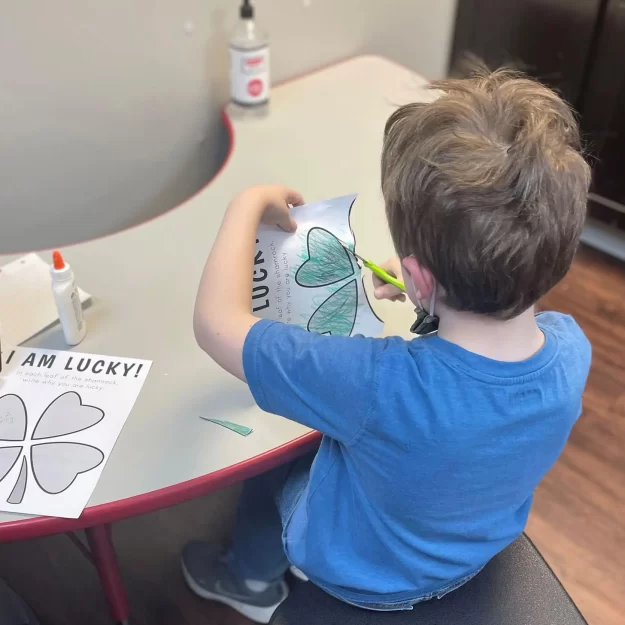Pediatric Occupational Therapy
What is Pediatric Occupational Therapy?
Pediatric Occupational Therapy treatment addresses difficulties with fine motor skills, visual/motor perception, self-care, and executive functioning. Occupational Therapy can help children feel more successful and independent by giving them the skills to manage emotions and interact with others, take care of themselves and build strength for playing.
Signs That Your Child Needs Occupational Therapy Include:
- Difficulty dressing–buttoning shirts, zipping zippers, or tying shoes
- Struggling with self-care (feeding, hygiene, etc.)
- Lacking social and play skills
- Using the same grip with different objects
- Struggling with handwriting and scissors
- Being overly sensitive to sounds such as vacuums or hair dryers
- Disliking the touch of different textures or pulling on clothes. Learn more about how to help your child with dressing in our Tips for Dressing blog.
Pediatric Occupational Therapy at Our Clinic
Our therapists will work with your child and family in a team-based approach to provide support, strategies, and interventions to help the child make sensory and motor skills progress in their everyday activities. Here’s what you can expect:
- In outpatient pediatric Occupational Therapy, children will work with a licensed occupational therapist (OT) and participate in structured and/or play-based therapeutic activities to help reach their individual goals.
- OT’s may incorporate books, toys, pictures, flashcards, games, iPad applications, crafts, and other tools to make sessions fun and motivating.
- Parent and patient education to allow for a better understanding of why the child needs services and the benefits of services.
- Activities to practice at home given to you by your OT that allows the child to work on things at home to achieve the max benefits of services.

Pediatric Occupational Therapy FAQs
Occupational Therapy helps children with ADHD by improving their organizational, emotional and physical skills, and ability to be able to do everyday activities better. The goal is to improve a child’s ability to do these everyday tasks such as showering, making their bed, organizing their backpack and more.
Many children who have ASD have difficulty with a variety of skills including sensory processing, executive function, motor planning, fine motor manipulation, attention, self-care skills, and following directions. Our occupational therapists will provide strategies, resources, and specified plans to decrease sensory avoidance, and increase sensory regulation which can help with daily routines, attention, and following directions. We can help with executive function by breaking up tasks/ grading the task, encouraging children to think through situations, emotional regulation, and helping children develop problem solving skills. Fine and visual motor skills can be addressed to help with school tasks and legibility. Occupational Therapy assists with self-care skills including tips for dressing, or toileting, and can increase tolerance for brushing hair or teeth, and bath time. Occupational therapists use a variety of strategies including visual schedules, timers, and round markers to help with transitions and following directions.
To be a pediatric occupational therapist, you need to earn a master’s degree in Occupational Therapy and obtain certification from the National Board for Certification in Occupational Therapy (NBCOT). This will include completing coursework and practicum or fieldwork requirements. And finally–you need to have patience, have some fun and smile. If you’re not having fun, the kiddos aren’t either!
